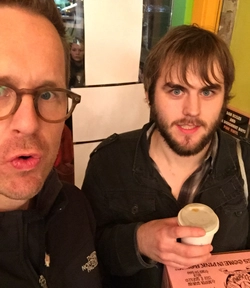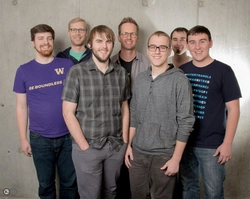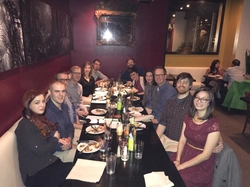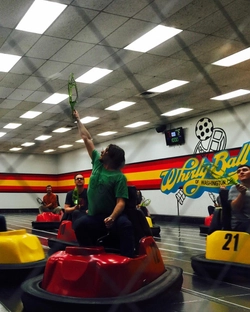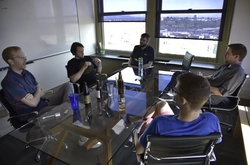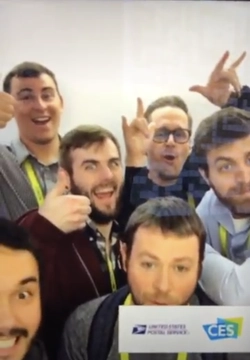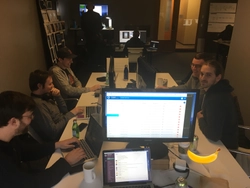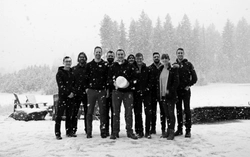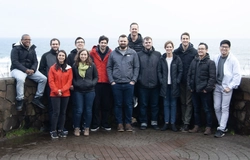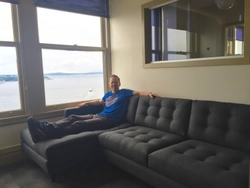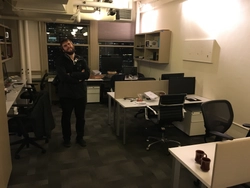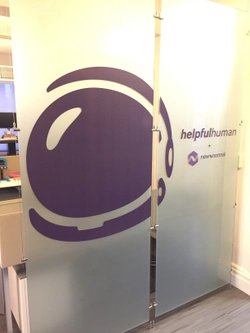Helpful Human
WebsiteIn 2013 I was attempting to start my own freelance web development business, Heroic Designs. Unfortunately for me, my skills were not in the business side of things and I was struggling to find clients.
Meanwhile, Mark Sandeno was still establishing his own software consultancy, Helpful Human. He had established himself as someone who could help clients get their ideas started and relied on collaborating with other teams to make development happen.
#How Mark and I started working together
Funny story, Mark is actually my second cousin. I would see him at family get togethers growing up, but the age difference between us meant that we didn’t often talk much. Regardless, I had him on Facebook.
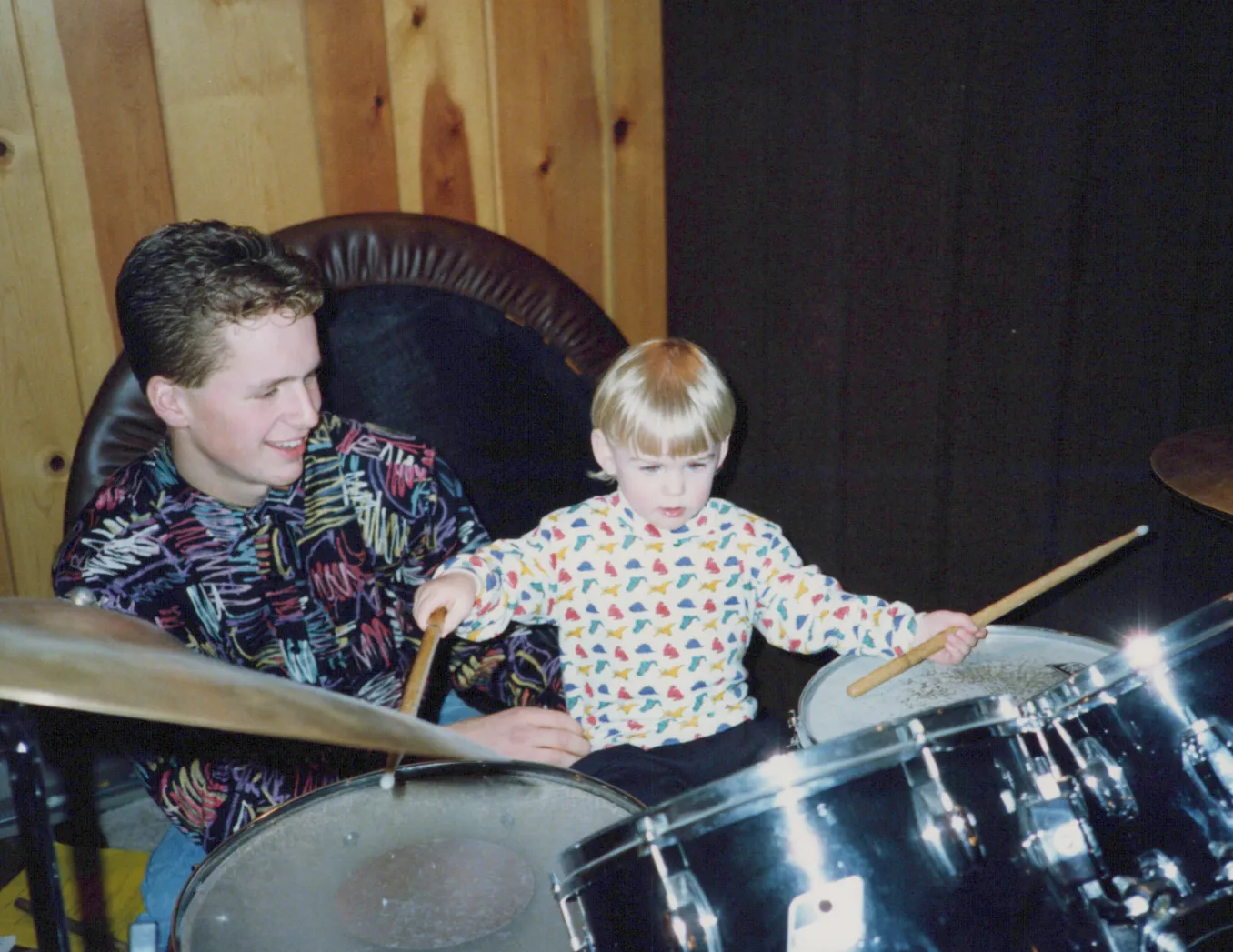
Future business partners in the making, playing drums.
Around this time I would sometimes make posts on my Facebook wall pointing to something I had recently written on my blog1. Mark saw one of these posts, and started reading through the rest of the content I had on the site. He sent me a message asking if I wanted to get a coffee with him and “talk shop”.
I took him up on the offer and we began sharing the challenges each of us were facing. He was actively looking to build his own development team and I was failing at finding clients to work for. He decided to test me on a few tasks he had on his plate. Before long, we were working on a couple projects together and he formally invited me to join Helpful Human.
#We started with almost no money
Mark had a small amount of cash from some previous ventures, but it was far from enough to pay either one of us a full salary. This meant every job was an all-in effort if we wanted to keep the lights on. To succeed, we had to scale our operation and started taking on more projects.
But there’s just 2 problems:
- I was the only developer and was quickly becoming overloaded.
- We were renting a small room in another company’s office space. Where do we even fit another person?2
So we started looking into options to bring on another developer and get a larger office space. A large portion of our clients were in Seattle, so it only made sense that we begin our search for a new office there. Our timing was honestly pretty good, as there was a new co-working start-up opening a space in South Lake Union, and they were willing to give us a deal to get in the door.
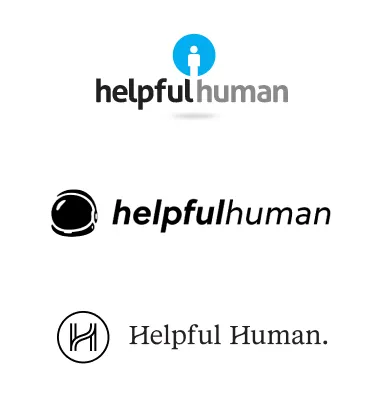
Iterations of the Helpful Human logo over time.
#Growing our team however we could
Did you know experienced developers are expensive?3
We didn’t have the revenue necessary to pay for someone more experienced, so what do we do? We decided we’d take a chance on a junior developer looking for an school internship and fill in any gaps that they hadn’t learned from their coursework.
This wound up being a great decision for us. Being willing to teach people new things and hiring ambitious people just starting out became a core part of our hiring strategy moving forward. Even more shocking is that many of our clients would wind up integrating us into their own hiring processes, because they wanted to hire the same kind of people we were.
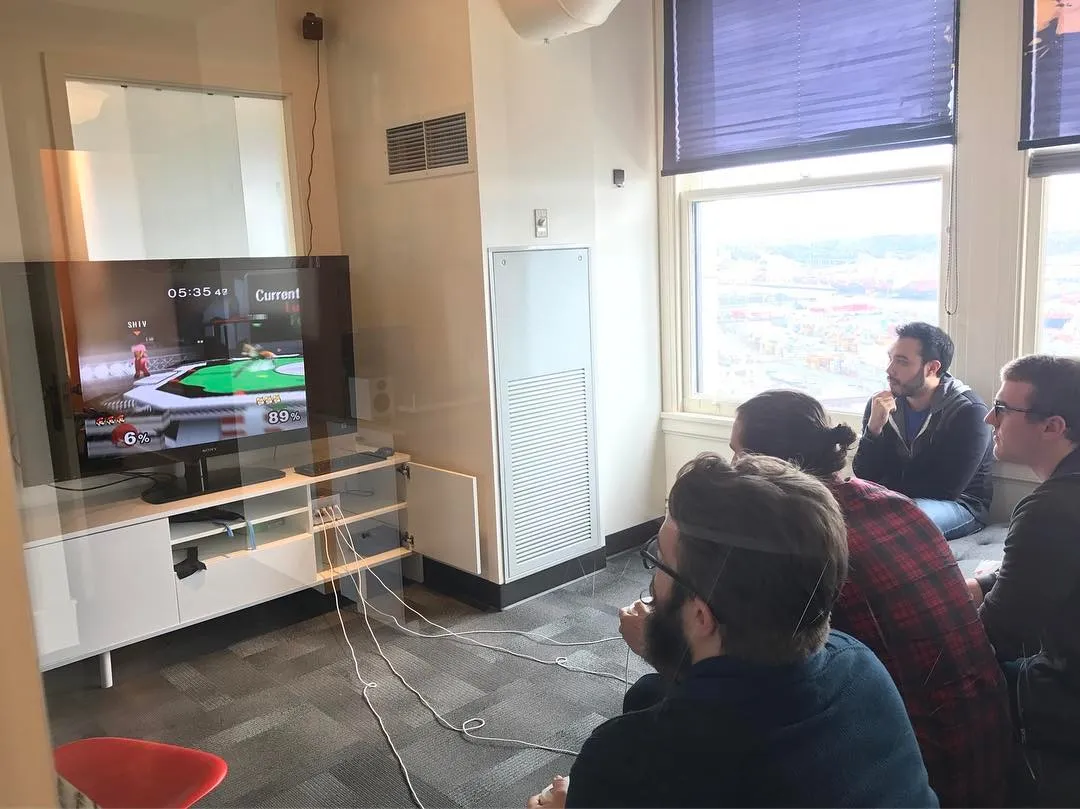
It was far from uncommon for the team to follow up lunch with a few rounds of Super Smash Bros Melee or Towerfall.
#AAAAH: Our approach to hiring
As we continued to hire more and more people, we ended up creating an acronym4 that represented the criteria we used to evaluate potential candidates.
- Affable: Are they easy to get along with? For us, this was one of the most important criteria. When your in the trenches on a difficult project, you need to know like and trust the people you’re working with.
- Aptitude: Do they have the ability to learn new things? Software development is a field that is constantly changing and you need people who like to learn new things if you want to maintain an edge on the competition.
- Adaptable: Can they handle change? Projects rarely go as planned, and you need people who can roll with the punches.
- Accountable: Do they take responsibility for the good and the bad? Owning your mistakes is super important to personal growth, and the faster we can move past the “what happened” to the “how do we fix it” the better.
- Human: This may seem silly, but we wanted people who were kind, empathetic, self-starting, and more than just “meat on a keyboard”.
#We hired some amazing people
Seriously. There is a pretty big cross section between my favorite people and the team I worked with at Helpful Human. Some of them I still manage to keep in touch with, and others I wish I could see more often.
#Our coolest office space
At one point, our head count was around 20 people and we decided it was time for a more permanent space. We wound up on the 31st floor of Seattle’s historic Smith Tower.
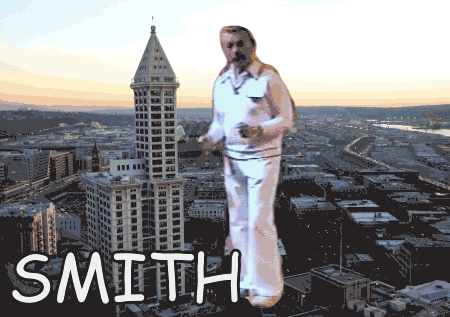
I don't remember who on the team made this, but it's perfect.
It’s age is large a part of its identity, creating a very unique space for an office. The elevators were manually operated and the windows were single pane of glass that could be fully opened.
Fun Fact?
The business that took over the space after us was Stoic, the team behind The Banner Saga series.
#So what exactly did we do at Helpful Human?
Mark had a way of finding work that rarely fit a single criteria (other than “software development”). This could be challenging at times to keep up with, but it also meant we never got too comfortable of what we were working on. Every single project resulting in us learning something new.
One area we would find ourselves specializing in was front-end development. For whatever reason, we kept partnering with other teams that had talented backend programmers (and even designers), but they often didn’t have the team or confidence to actually create the user interface specifically.
As for the exact work we did, sadly I’m unable to offer specifics due to contract agreements. I can say that our clientele ranged from small start-ups to some of the largest companies in the world. I’ve been apart of projects whose budgets were less than $10,000 all the way up to ones that exceeded $2 billion5.
We would also occasionally invest into our own projects, like 50 States Supply and Experiences App.
#My resignation (and occasional on-going involvement)
At the beginning of 2020, I decided it was time for me to move on from Helpful Human. It wouldn’t be until August that same year that my departure would be finalized, and I went on to form Catalyst Softworks.
Mark wound up being a partner in my new venture, and from time to time would bring me in as a contractor to help with some of his client-work at Helpful Human.
